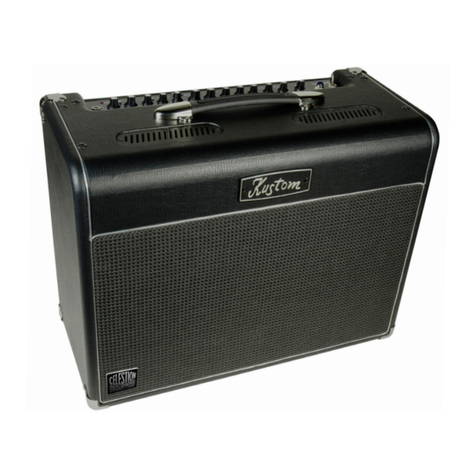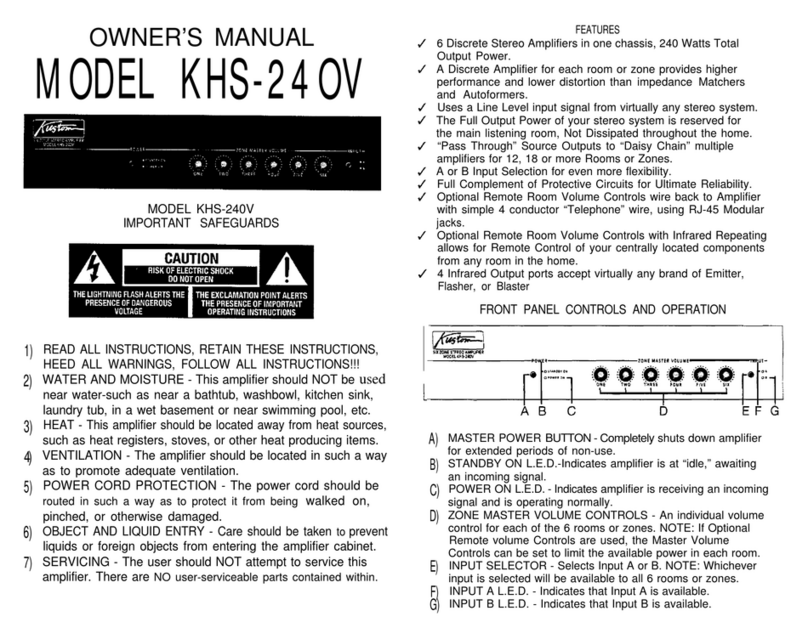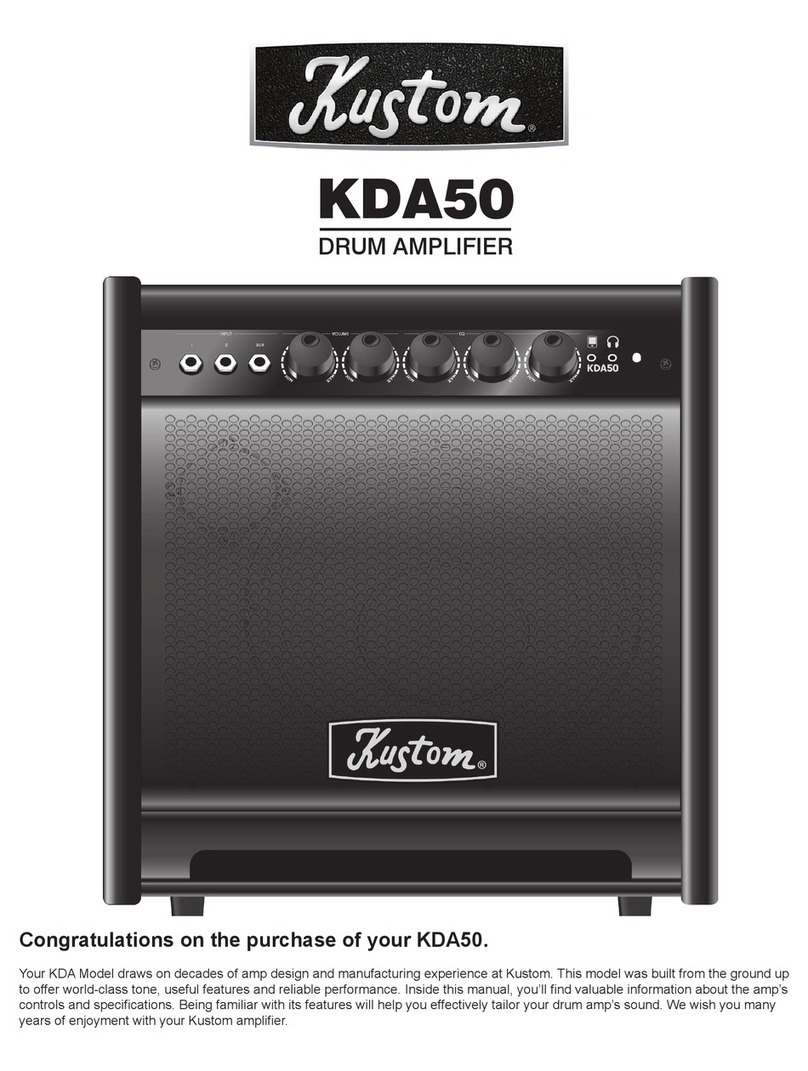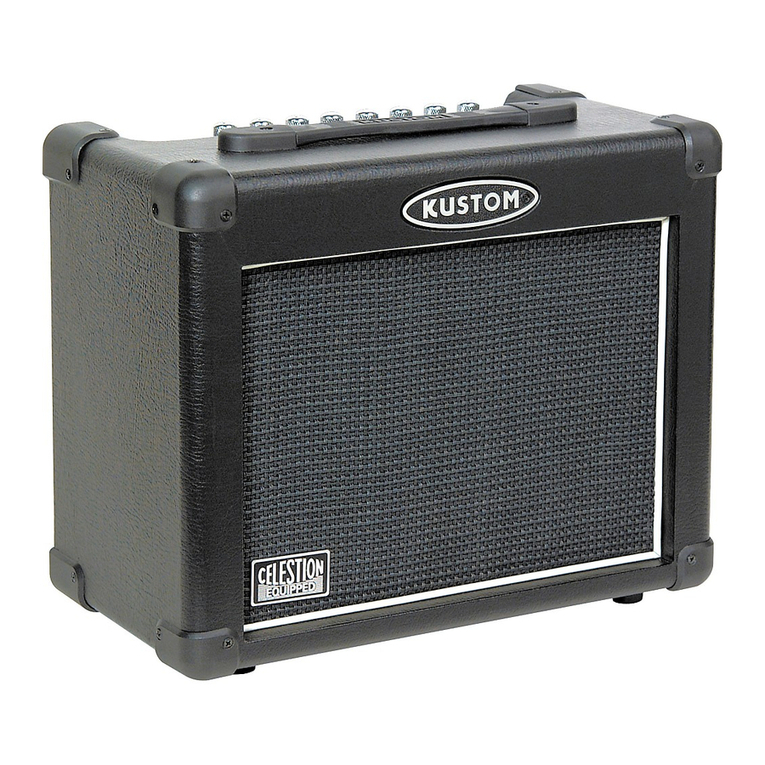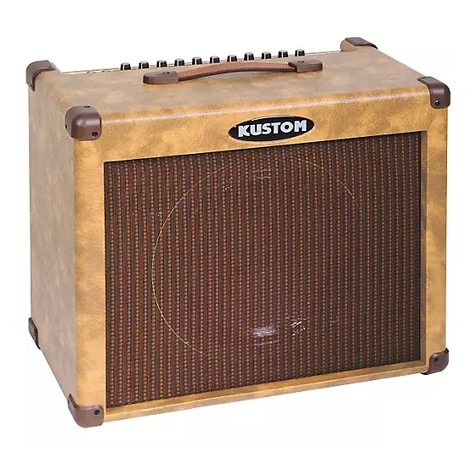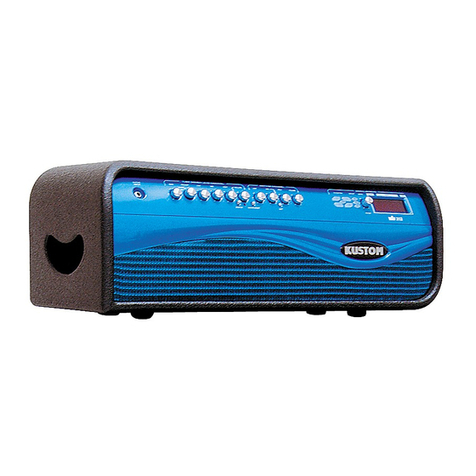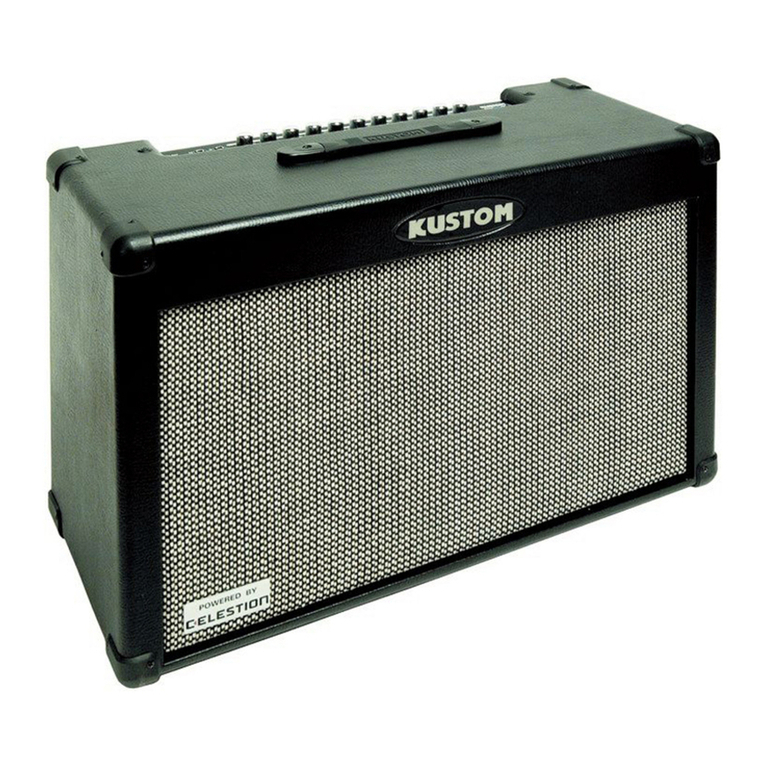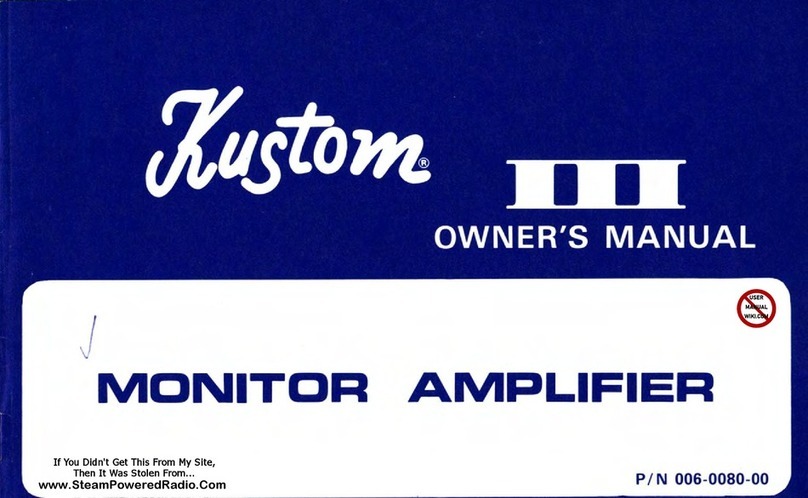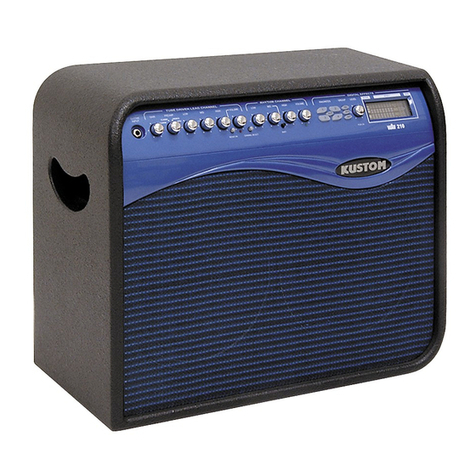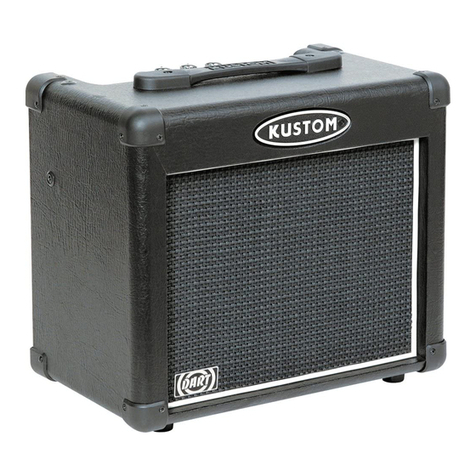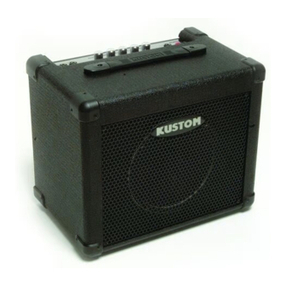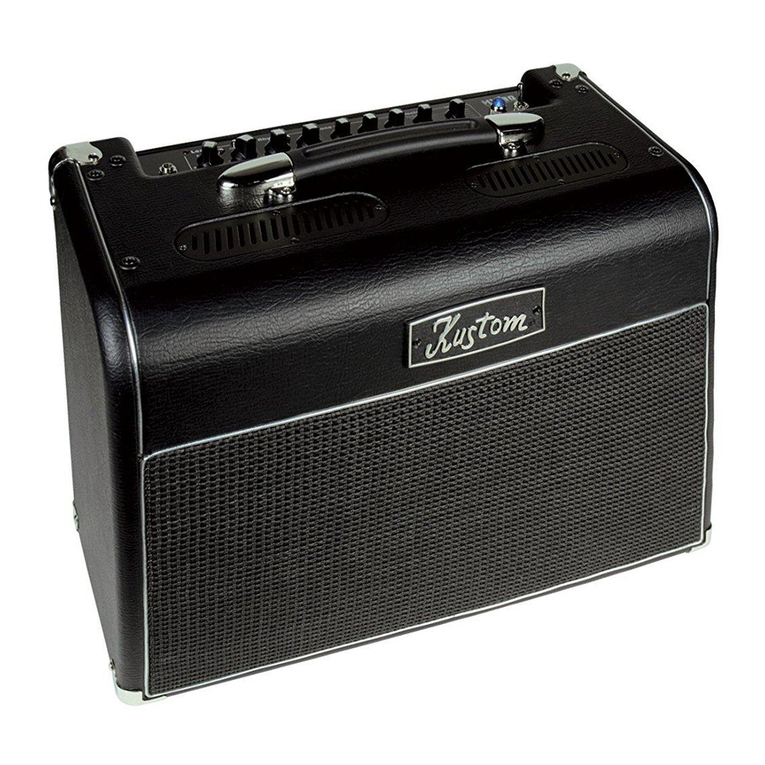Model 36 Coupe All Tube guitar amp
Power Amp Tubes 2-6L6GC power tubes using AUTOKRUISE TM biasing scheme
Preamp Tubes 4-12AX7 preamp tubes(2 preamp, 1 effects loop, 1 phase inverter)
Output Power 36 W RMS 16, 8, or 4 Ohms @ 5% THD
Speakers 1 X 12 inch KEI(Kustom-Eminence Integrated) with aluminum dust cover
Input Impedance
Hum & Noise -85 dBV Residual Noise, all level controls 0% (minimum)
48 dB Rhythm Channel Nominal gain, Input 1, Volume @ 5
62 dB Rhythm Channel Maximum gain, Input 1, Volume @ 10
75 dB Lead Channel Nominal gain, Input 1, Volume @ 5
90 dB Lead Channel Maximum gain, Input 1, Volume @ 10
+10 dB Maximum gain of footswitchable Volume Boost
+3 dB Gain increase at 1 kHz when Bright is pulled
-6 dB Gain decrease when using Input 2
30-40 dB Power amp gain(Effects Return to Speaker, depending on Boost)
Nominal Signal to Noise 70 dB Rhythm Channel, with Volume half and Master Maximum, Boost on 10
0.15 VRMS (-16 dBV) Levels w/Boost on 10 to reach full power output
0.6 VRMS (-4 dBV) Levels w/Boost on 0 to reach full power output
Effects Send Tube driven, Nominal load >10k ohms
Effects Return Tube driven, >100K ohm input impedance
Footswitchable Boost Master Volume Boost Adjustable from 0 to +10dB boost AFTER the Effects Loop
After power amp with speaker emulation
Output level Adjustable from 0 to +10 dBV, nominal -6 dBV
USA/Canada 120VAC/60Hz, 180W nominal
Europe 230VAC/50Hz, 180W nominal
UK 230VAC/50Hz, 180W nominal
Australia 240VAC/50Hz, 180W nominal
Japan 100VAC/50-60Hz, 180W nominal
mm/kg 475 mm (Height) x 575 mm(Width) x 270 mm(Depth), 20.5kg
Inches/Pounds 18.75" (Height) x 22.75" (Width) x 10.625" (Depth), 45 lbs


